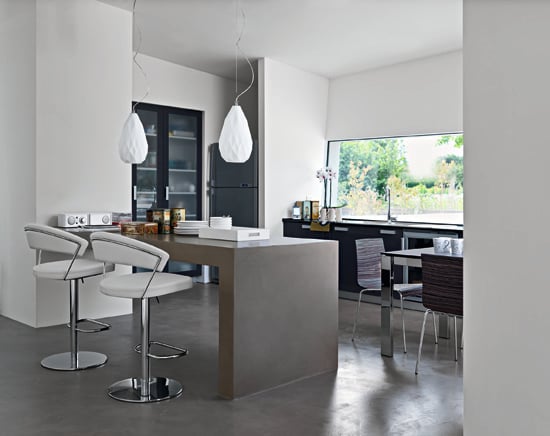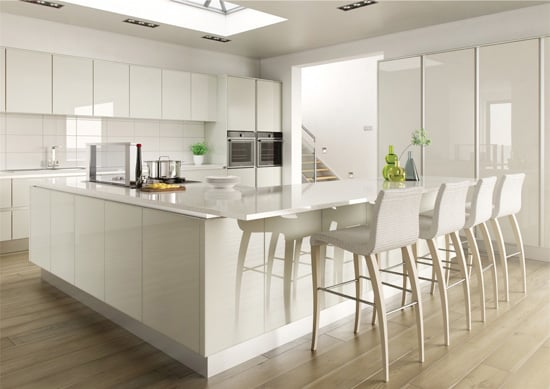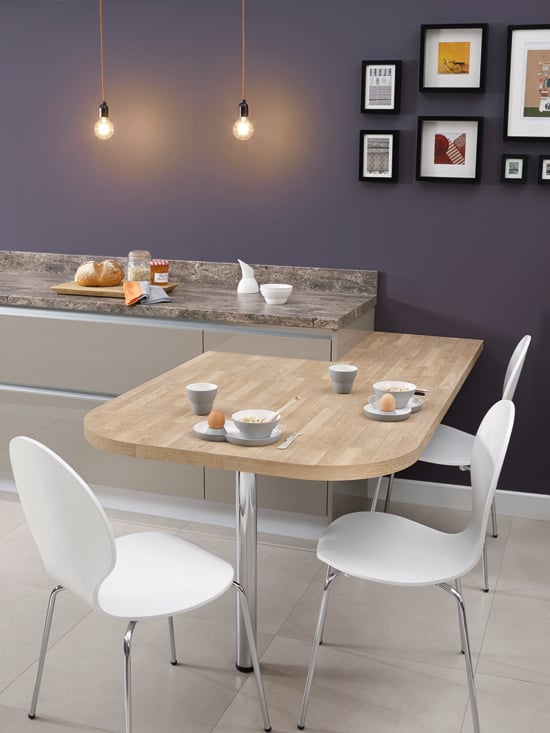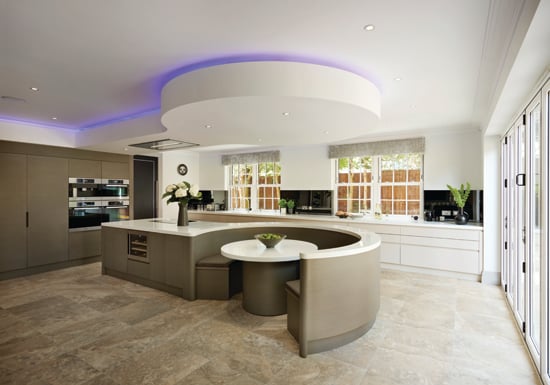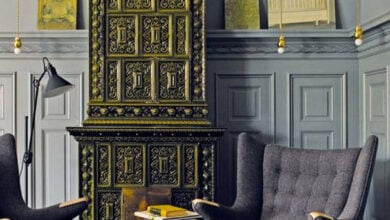Appliances and worktops are standard features in the kitchen but the popularity of open-plan rooms means it now needs one element that wasn’t a priority previously – comfortable, welcoming seating. Incorporating it can be tricky, especially if space is in short supply, but it’ll really come into its own at Christmas.
Not only does seating need to be a cohesive part of the design, especially when it’s not in use, where you locate it is key. Place it too close to the working area of the kitchen, and whoever’s sitting there will be in the way. Place it too far away, and you’ll be struggling to hear your guests or children.
First, work out what kind of seating you need. Will it mainly be used for quick breakfasts and mid-morning coffee breaks or would you like something more suited to full meals and entertaining? This may dictate whether you choose a built-in banquette or a breakfast bar set-up.
Simple stools
Great for light meals, snacks on the go and encouraging kids to sit and do their homework, barstools are an easy addition to an island or peninsula. Opt for height-adjustable gas-lift stools and they can be set to suit the level of your worktop overhang, no matter who’s sitting there. This is also handy for when they’re not in use, as you can lower them and tuck them underneath the overhang, so they’re not in the way. If manoeuvring onto standard stools is a challenge, be sure to choose seats with comfy backs and arms, as well as lots of padding for optimum comfort.
Image source: Calligaris
Static bar chairs are another option and always set at the right height, but you’ll need to buy more carefully to ensure they complement the level of your breakfast bar – if they’re too low or high, they’ll probably be used less.
Image source: Crown Imperial
Versatile chairs
Along similar lines but with less perching, dining chairs are great for low-level, purpose-built surfaces that act as integral tables. Choose stacking chairs and they can also be tidied out of the way in a flash. Plus when your dining area isn’t in use for meals, it can function as an extra surface. Padded seating isn’t always a must if you only plan to use it for breakfast and speedy lunches, so choose wipe-clean chairs to minimise clearing up after messy mealtimes.
Image source: Bushboard
Beautiful banquettes
It’s hard to rival a permanent seating arrangement for comfort and style, especially when it’s been designed as part of a central island unit. Treating it as part of the overall scheme means it’ll also look less like a last-minute add-on and more a style statement in its own right. Not only can you opt for furniture that matches your kitchen cabinetry, you can even continue the same worktops for a sleek, seamless feel. This built-in arrangement brings a beautiful curve to the design and has been echoed overhead by a ceiling bulkhead and coloured lighting.
Image source: Charles Yorke
Build a bench
There’s no hard and fast rule that says your seating has to be identical, so why not try adding a bench to your dining area? It can squeeze more people on if you’re catering for a crowd during the festive season and it’s a good use of space when it’s built-in – and even better if you include storage drawers or recesses below the cushions. You can pair it with chairs or a freestanding bench and even set it into the bay of a window to maximise floor area. A bespoke bench can be constructed in conjunction with a bookcase and feature tongue-and-groove panelling for a pretty country-style look.
Ready to get add some stylish custom seating to your kitchen? Get in touch with a vetted carpenter who can craft a bespoke solution to fit your budget.
